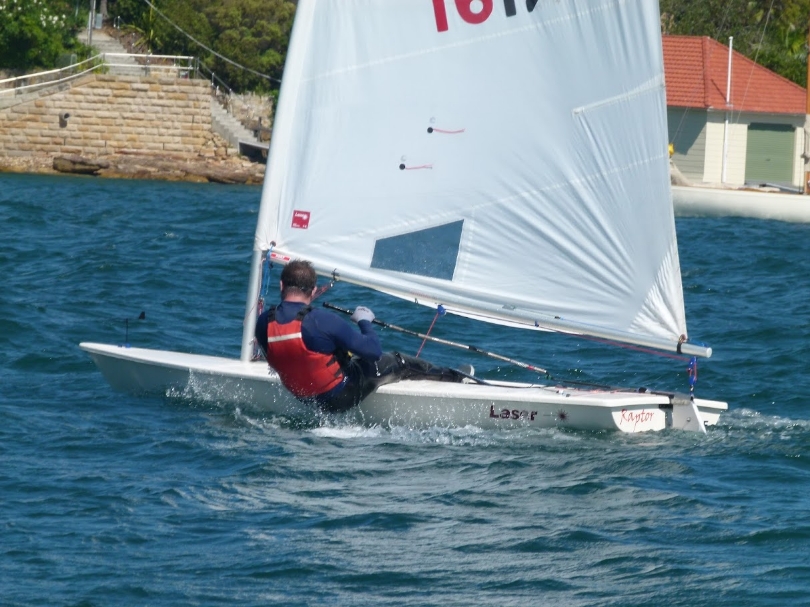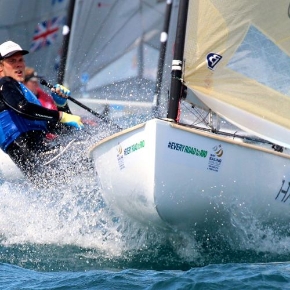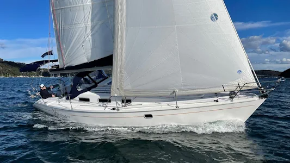Mastering the Cunningham on a Heavy Wind Day: Tips for Laser Sailors

Sailing a Laser in heavy winds can be both exhilarating and challenging. One of the key adjustments you can make to optimize your performance is managing the cunningham. In this post, we’ll explore how to effectively use the cunningham in strong winds, understand the concept of apparent wind, and handle various wave states.
Understanding the Cunningham
The cunningham is a crucial control line on your Laser that helps flatten the sail by tensioning the luff. This adjustment is particularly important in heavy winds to reduce drag and maintain control.
Why Adjust the Cunningham in Heavy Winds?
- Flattening the Sail: In strong winds, a flatter sail reduces heeling and weather helm, making the boat easier to handle.
- Lays off the top of the leach: In strong wind you want to have the top of the leach as parallel to the wind as possible. In strong winds you want the cunningham as strong as possible so you can reduce the amount of drag up high.
- Improving Upwind Performance: A properly tensioned cunningham helps you point higher and sail faster upwind.
- Reducing Drag: By minimizing the sail’s draft, you decrease aerodynamic drag, which is essential for maintaining speed and stability.
Steps to Adjust the Cunningham
- Assess the Wind Conditions: Before heading out, check the wind speed and direction. Heavy winds typically range from 15-25 knots or more.
- Set Up Your Boat: Ensure your cunningham is rigged correctly and easily adjustable while sailing. On an ILCA6 you can get away with a 6:1 system while on the ILCA 7 rig you should opt for an 8 or 10:1 system.
- On the Water Adjustments:
- Increase Tension: As the wind picks up, gradually increase the tension on the cunningham to flatten the sail.
- Monitor Sail Shape: Keep an eye on the sail shape and adjust as needed to maintain a flat profile. In strong wind you want the top of your leach to flick off which will make it much faster and easier to sail.
- Fine-Tune: Continuously fine-tune the cunningham based on changes in wind strength and direction. When the wind drops off it really pays to release the tension and power your sail back up again.
Apparent Wind and Its Impact
Apparent wind is the wind experienced on the boat, which is a combination of the true wind and the wind created by the boat’s motion. In heavy winds, understanding apparent wind is crucial for effective sail trim.
- True Wind: The actual wind blowing across the water.
- Apparent Wind: The wind you feel on the boat, which can be stronger and from a different direction than the true wind.
Managing Apparent Wind
- Sail Trim: Adjust your sail trim to optimize for the apparent wind direction and strength.
- Boat Speed: As your boat speed increases, the apparent wind angle moves forward, requiring continuous adjustments to the cunningham and other sail controls.
- Gust Response: When a gust hits more of the true wind direction will take over as the overall percentage of your motion to the wind speed is reduced. This will be perceived as a lift. In strong wind keep your speed up by sheeting out and hiking while moving up on the wind once you have inceased to the new speed.
Handling Wave State
Heavy winds often come with challenging wave conditions. Here are some tips to handle different wave states:
- Choppy Waves: In choppy conditions, keep the boat flat and use body weight to balance. Adjust the cunningham to maintain a flat sail and reduce drag. Steer into each wave and bear away down its back face. This also coordinates with the apparent wind generated by the relative speed changes as you go over the wave.
- Large Swells: In larger swells, timing your movements with the waves is key. Use the cunningham to depower the sail when necessary to prevent being overpowered by gusts. In this case the Steering is even more important. Releasing the main as you get to the crest of the wave can help by taking the pressure off the bow and getting you in position to plane down the back of the wave.
Conclusion
Mastering the cunningham in heavy winds is essential for Laser sailors looking to improve their performance and safety on the water. By understanding and adjusting for apparent wind and handling various wave states, you can sail more efficiently and confidently. Happy sailing!












